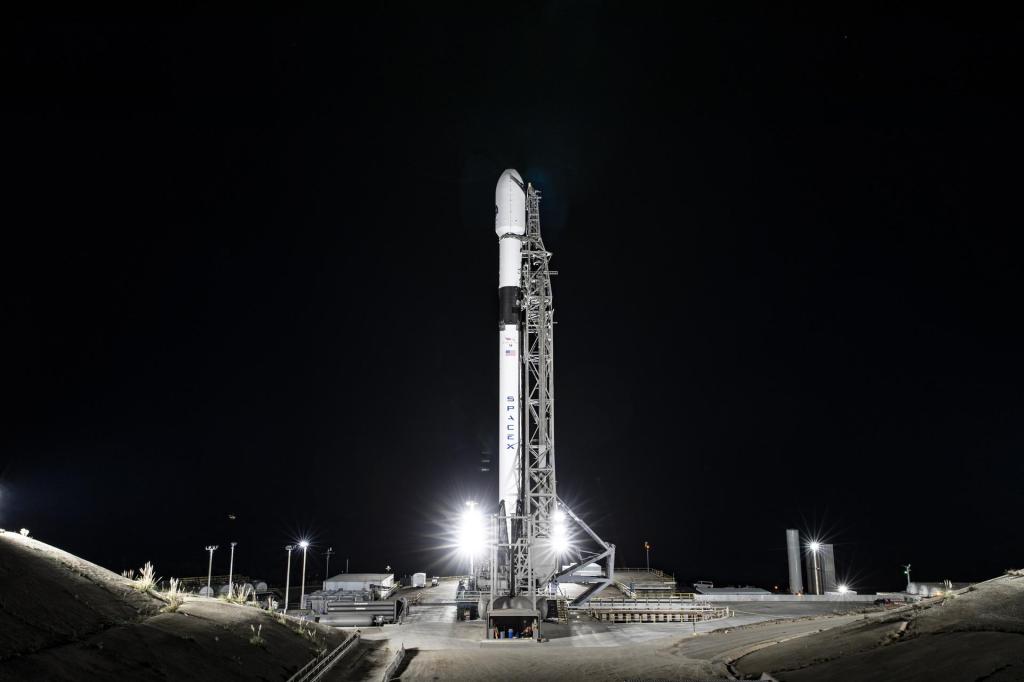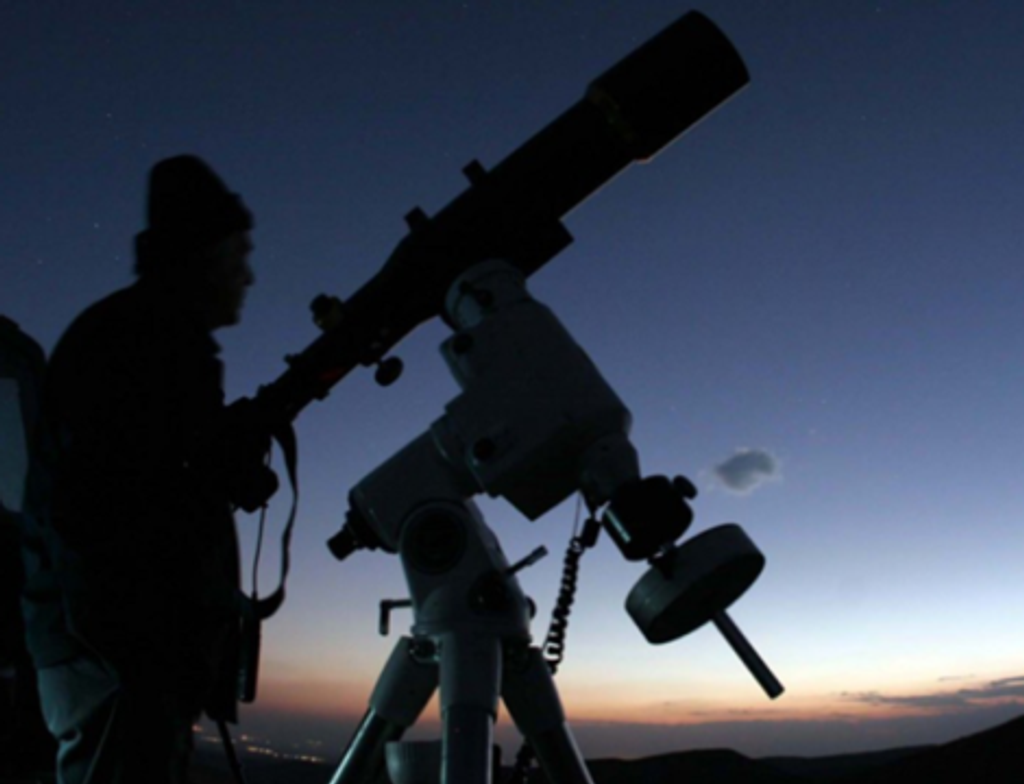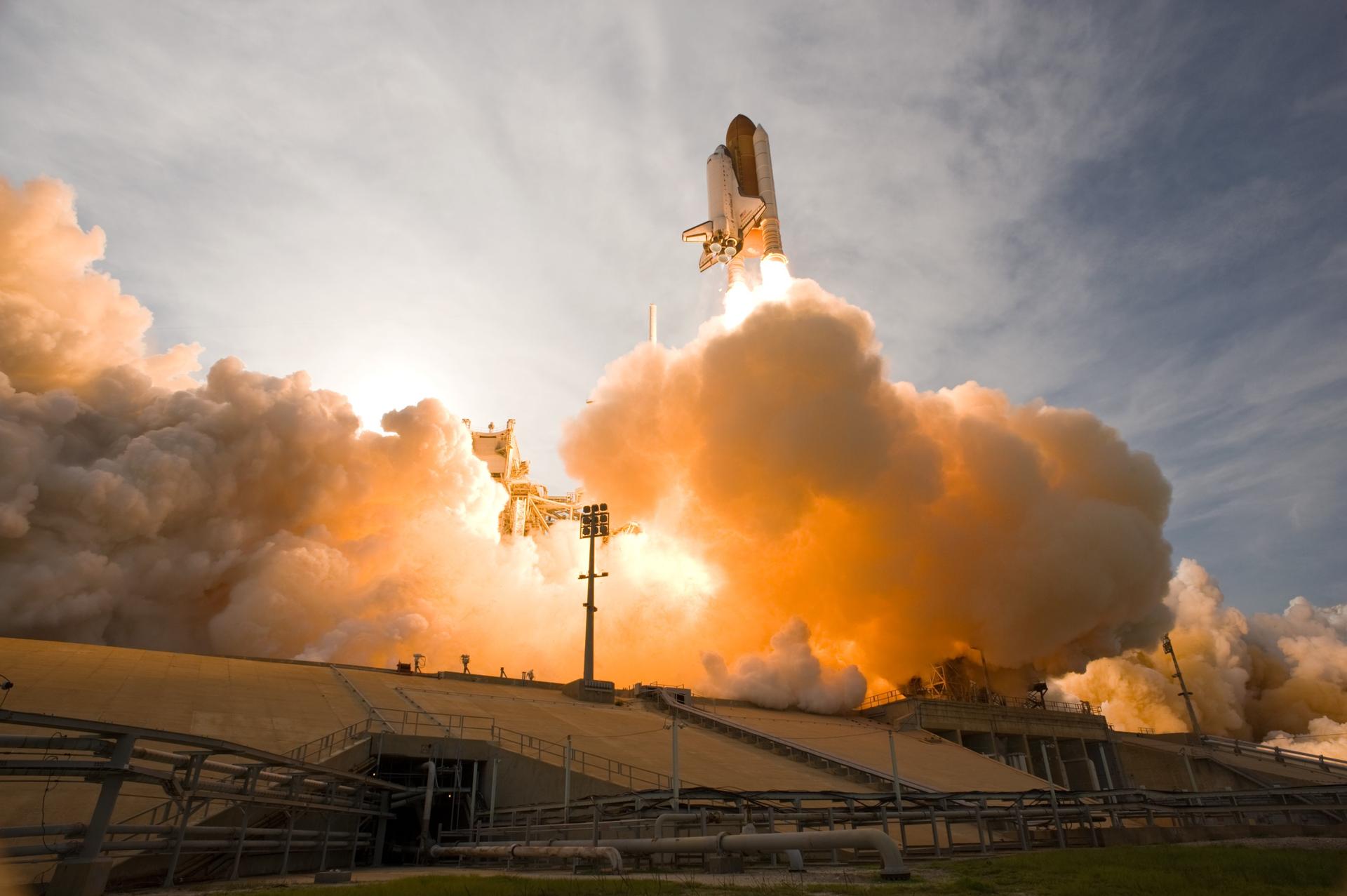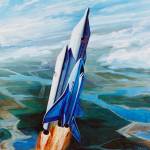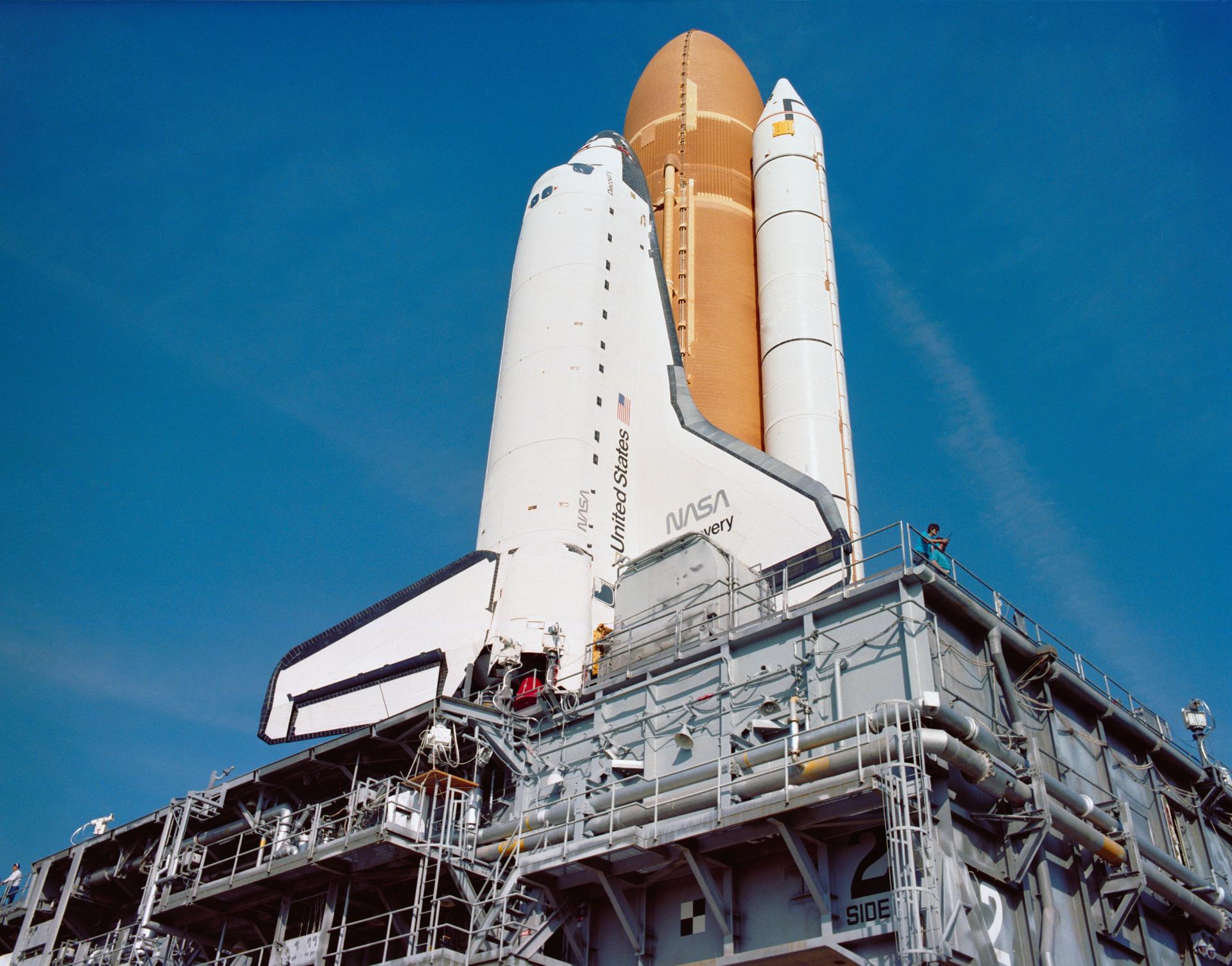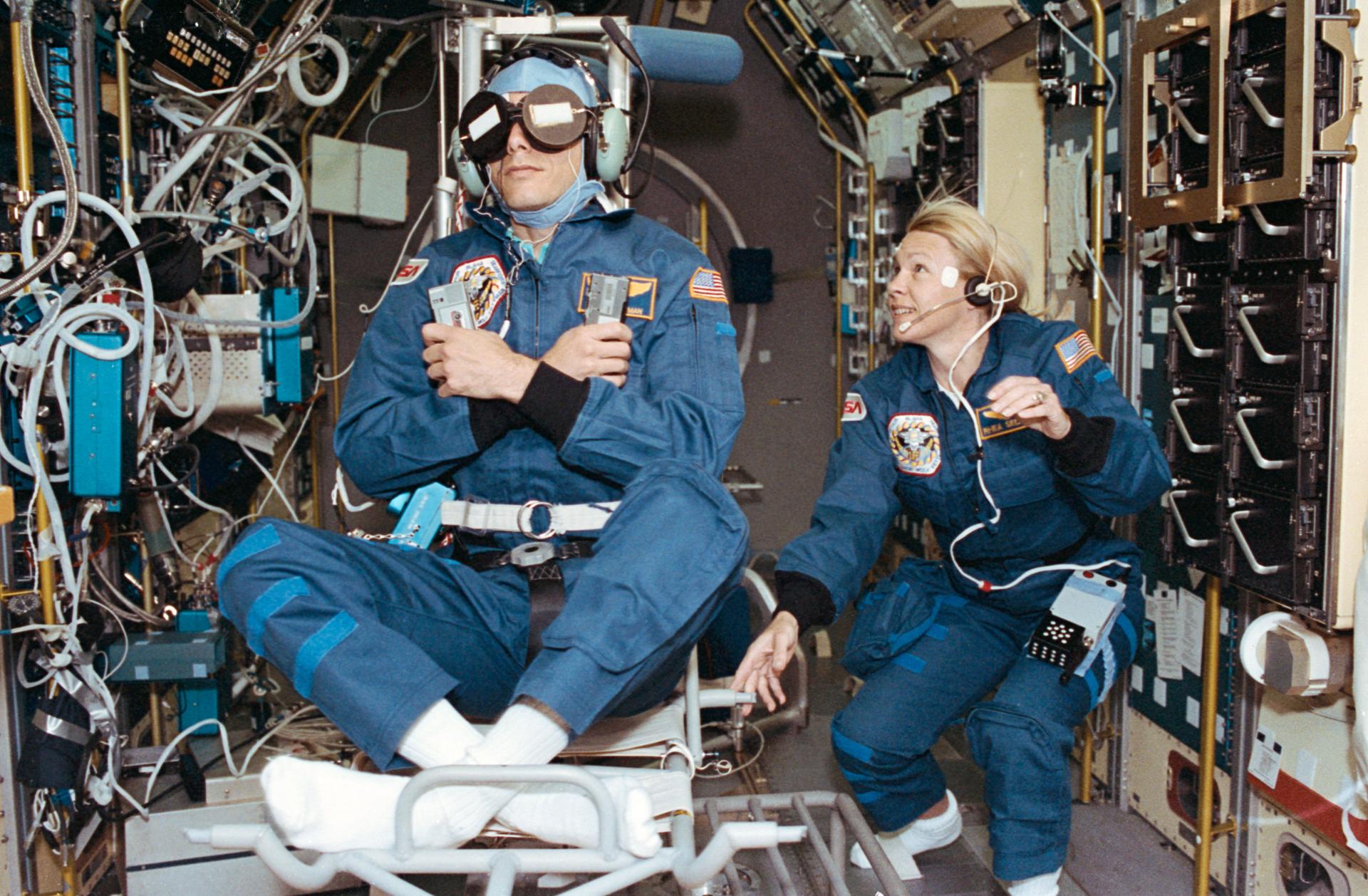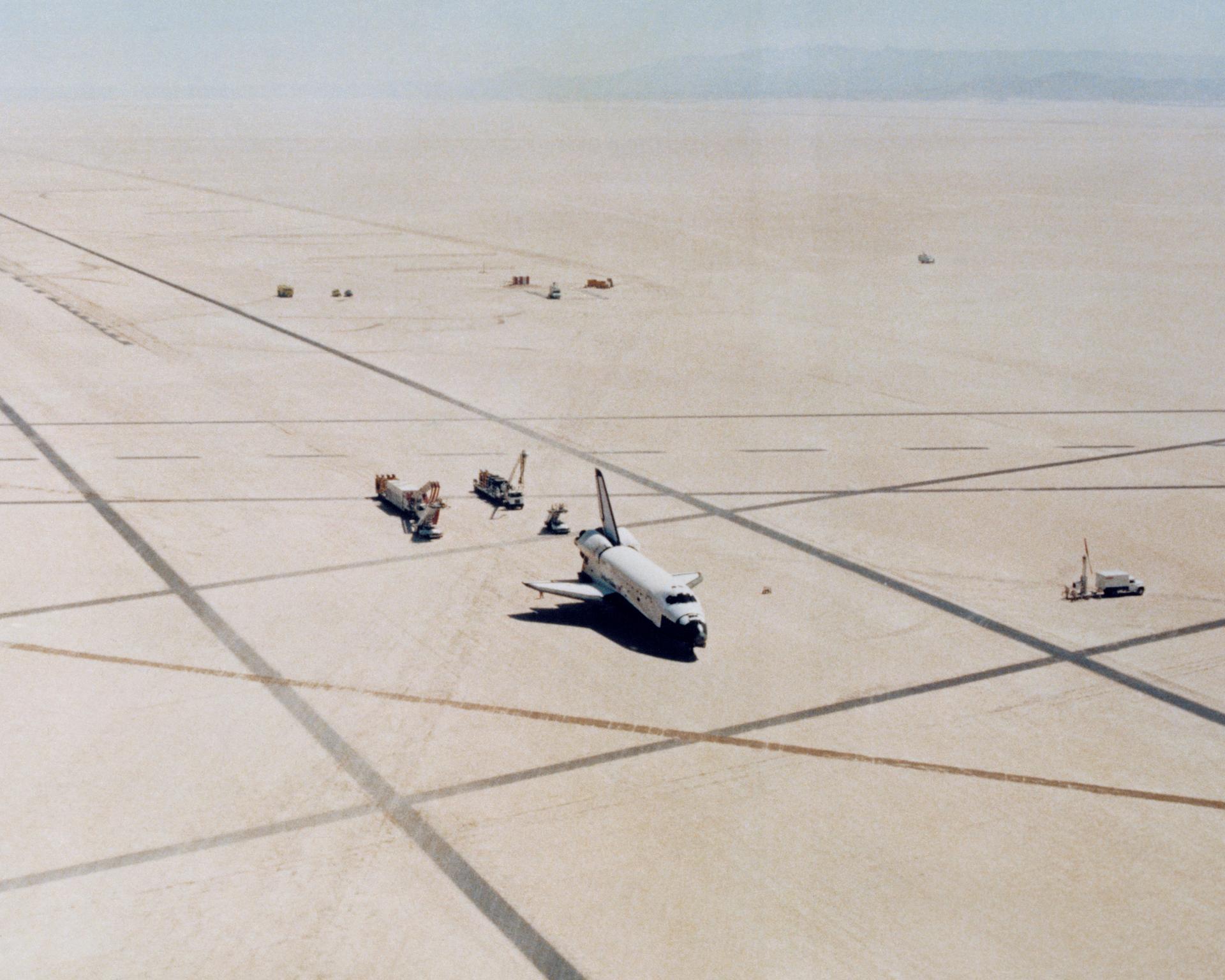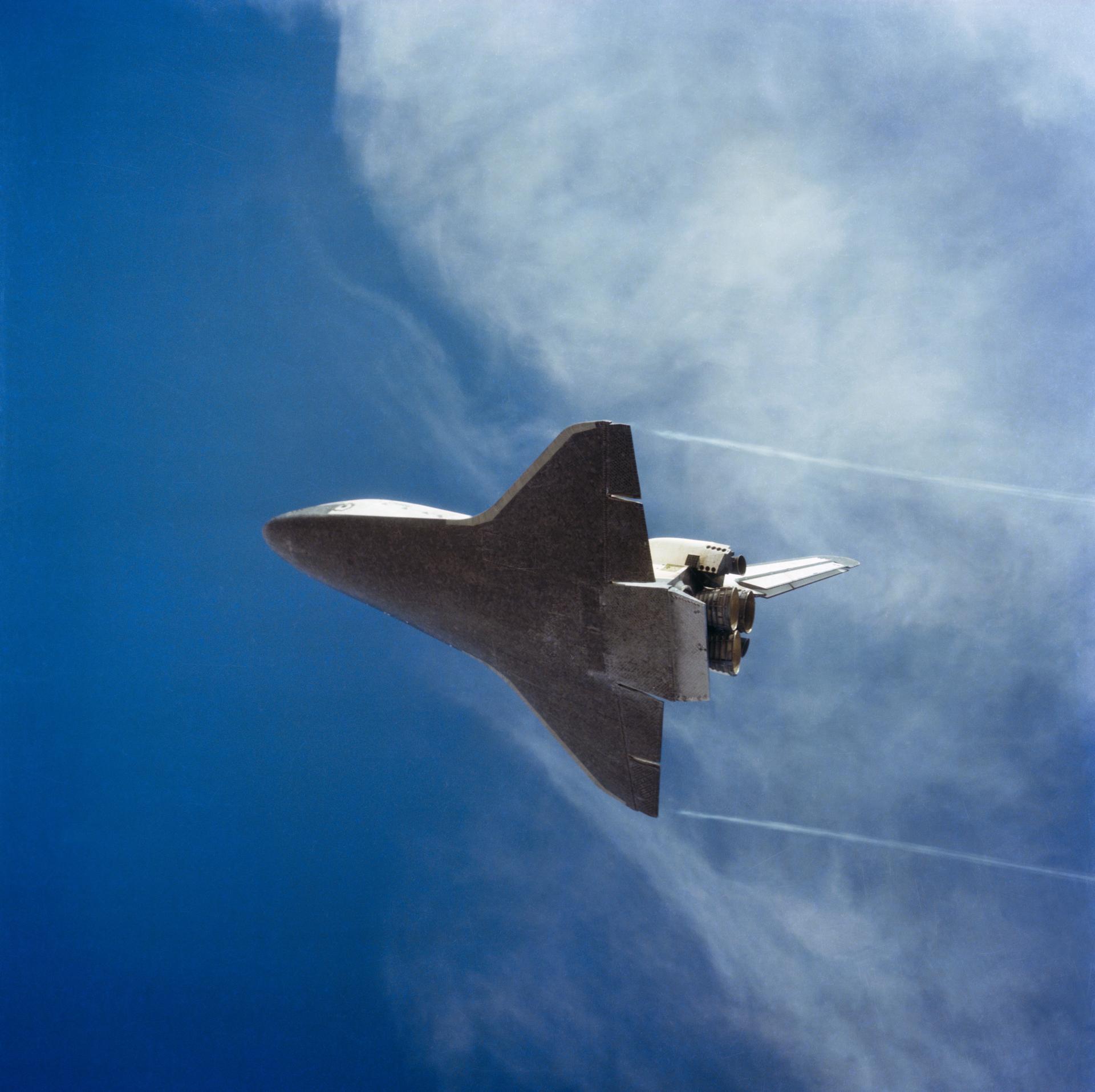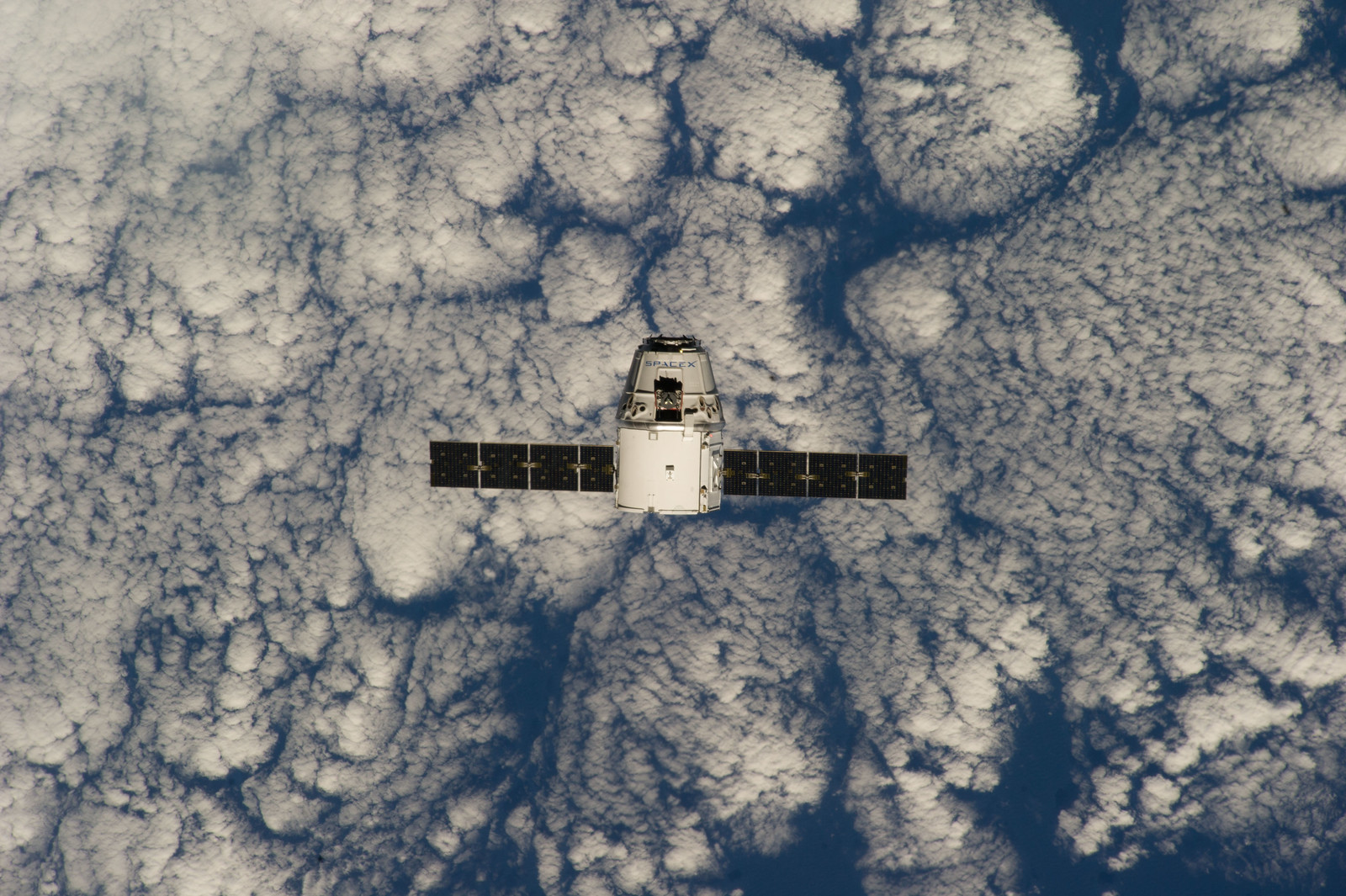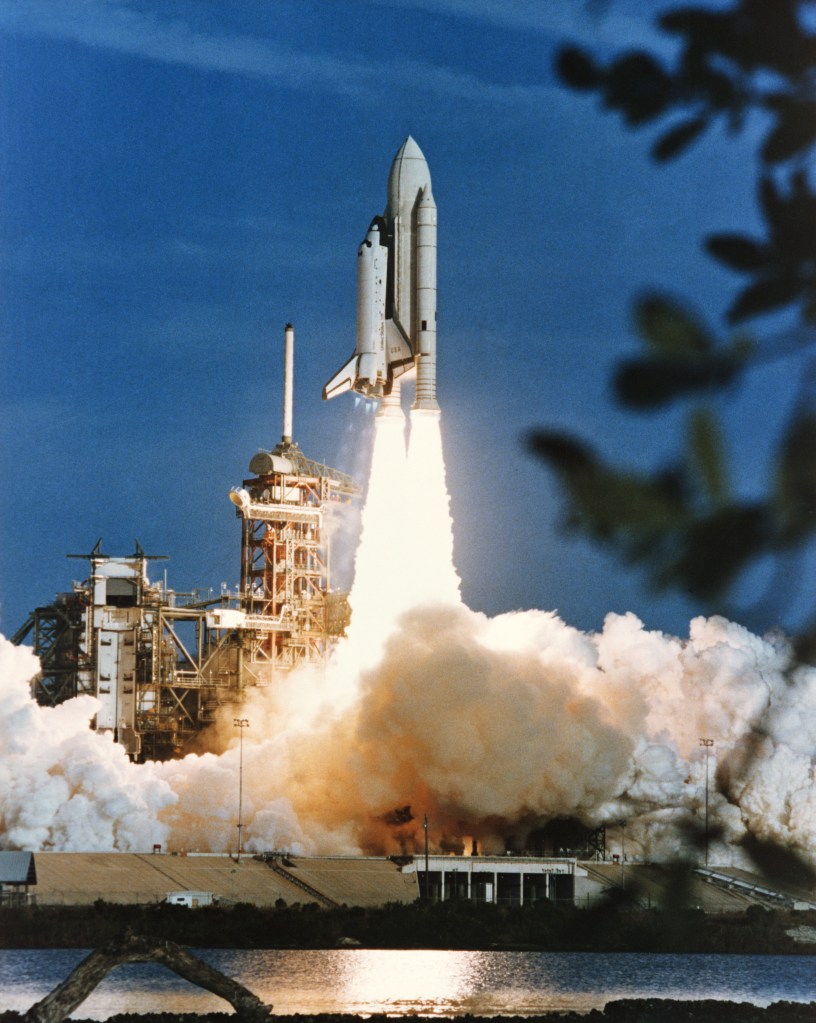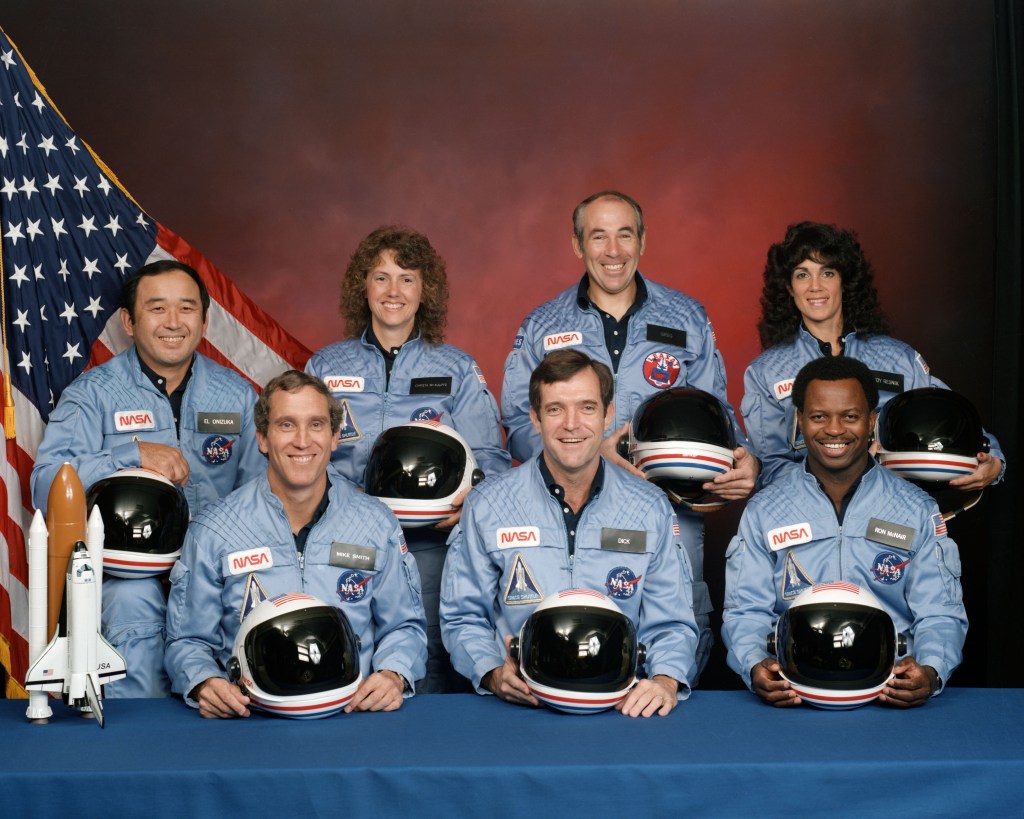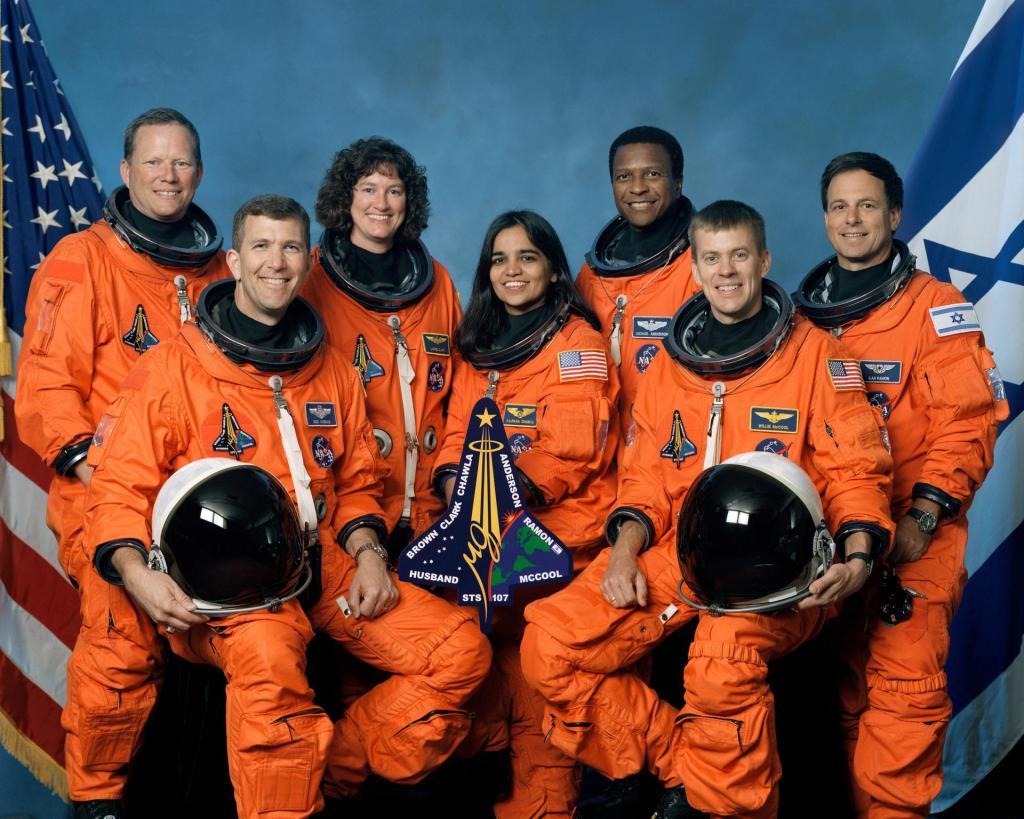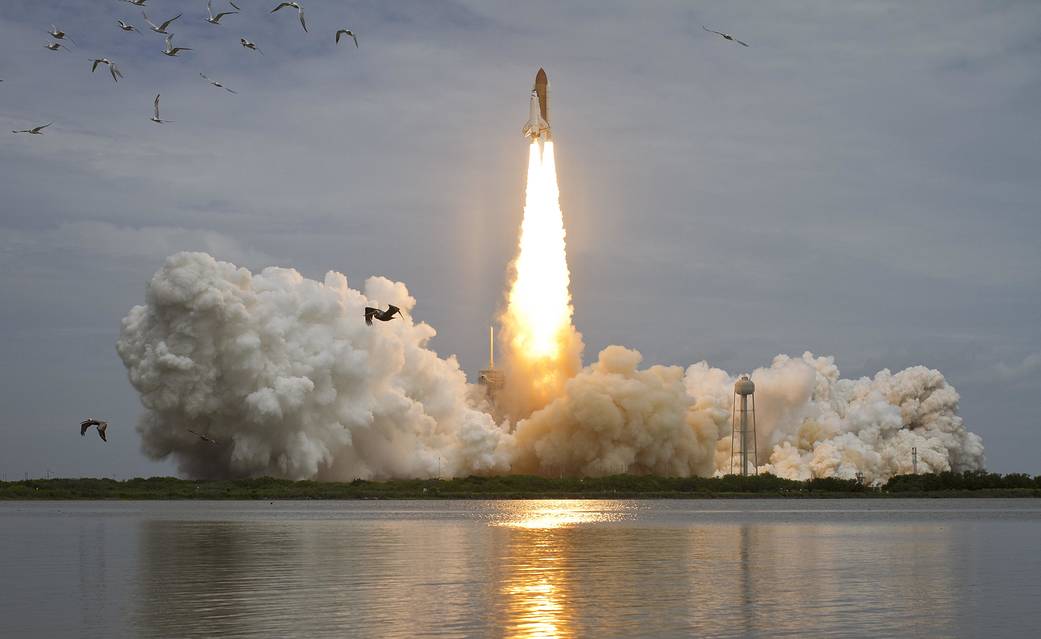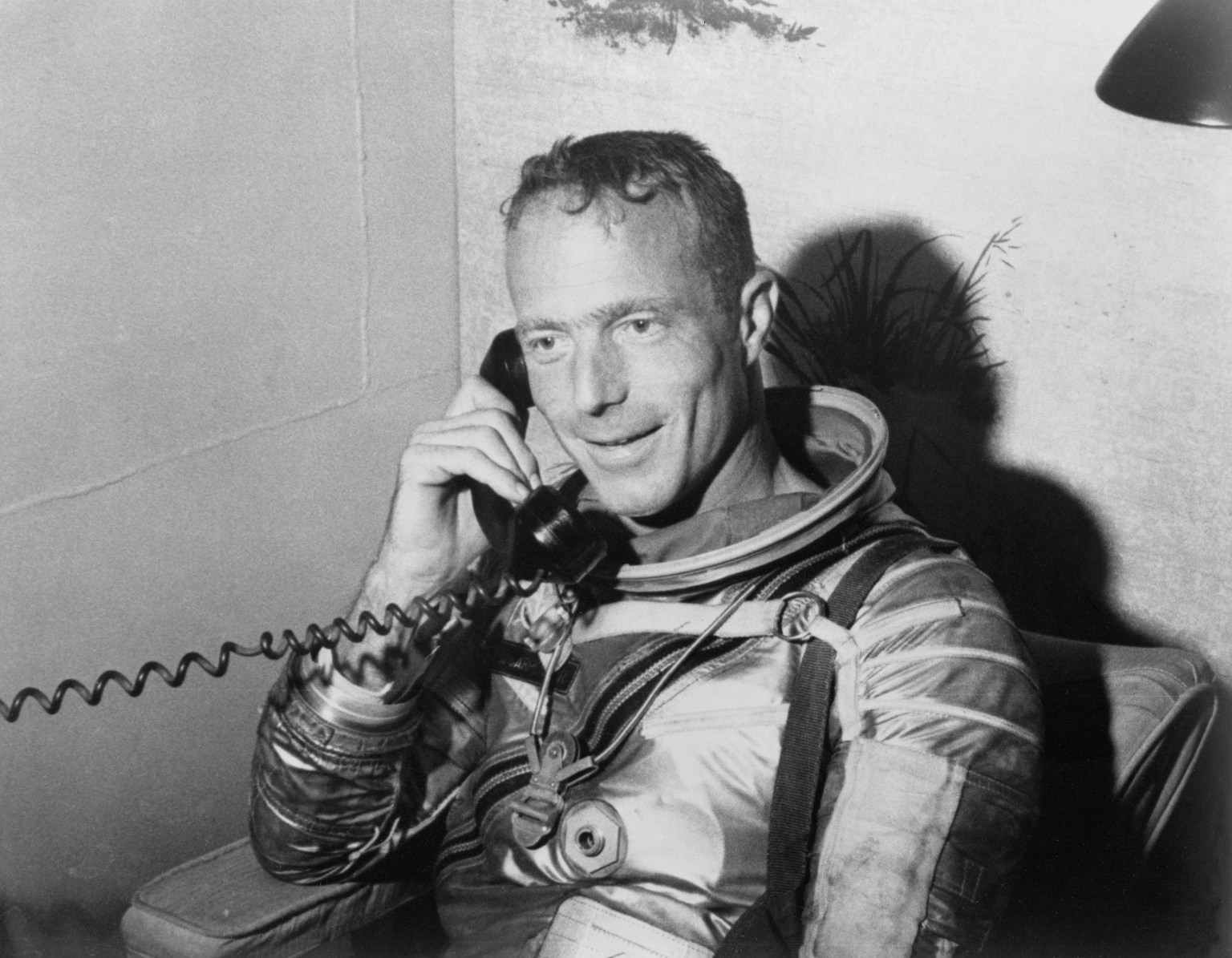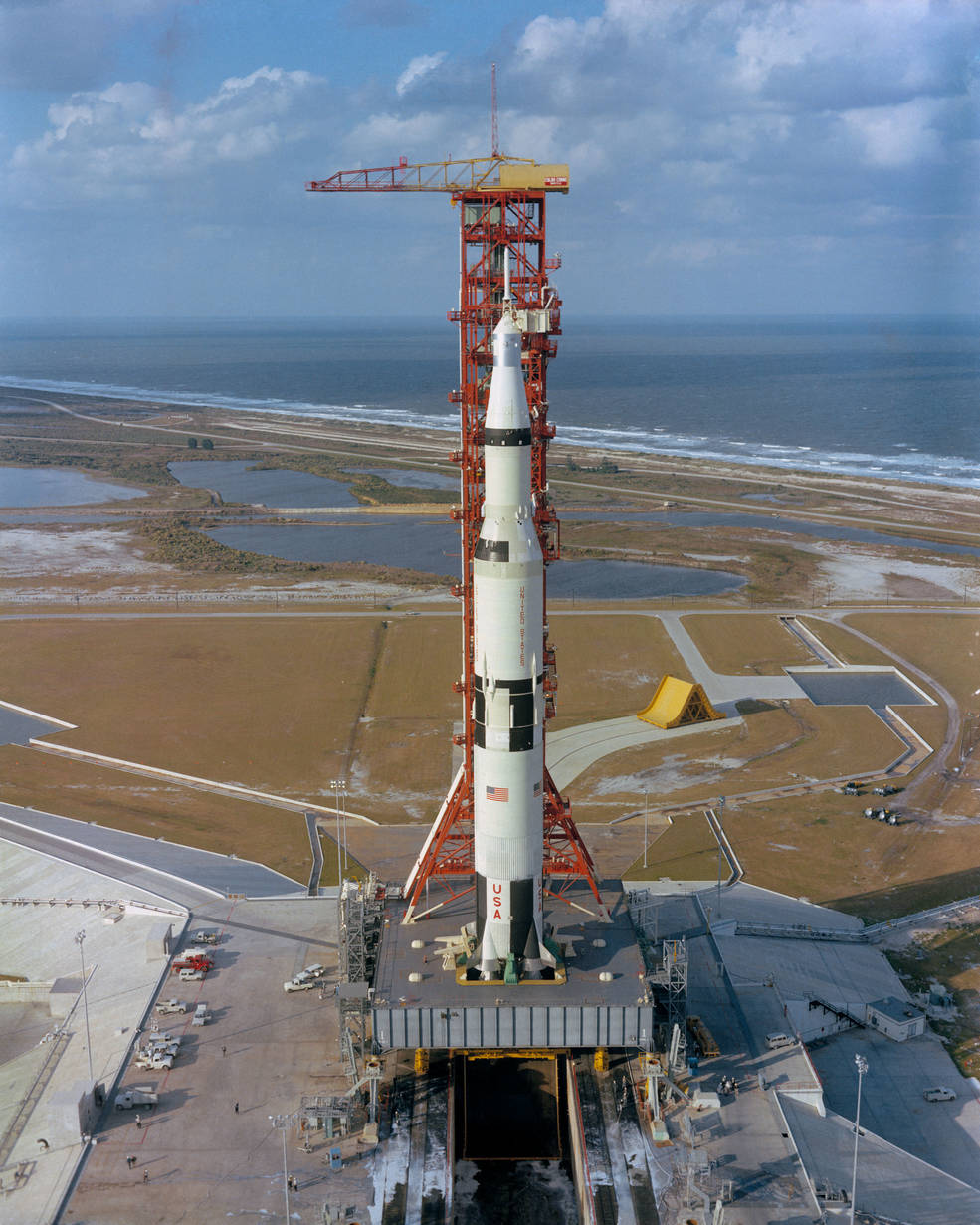Historical Resources
Space Shuttle
From the first launch on April 12, 1981 to the final landing on July 21, 2011, NASA’s space shuttle fleet flew 135 missions. In this collection of historical resources, discover the story of how the Space Shuttle program came to be, its setbacks and lasting achievements over the decades.
The Space Shuttle
Learn the basic history around the world's first reusable spacecraft, a chronology of its construction, as well as details about its component parts, and specific facts about each of the six shuttle orbiters.
Learn More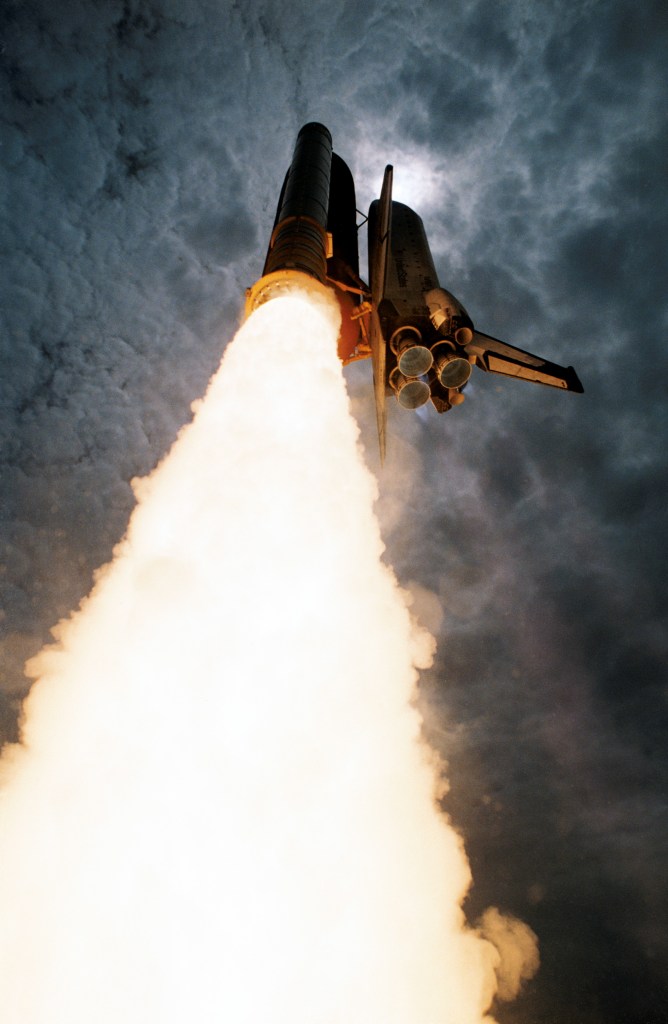
NASA Publications
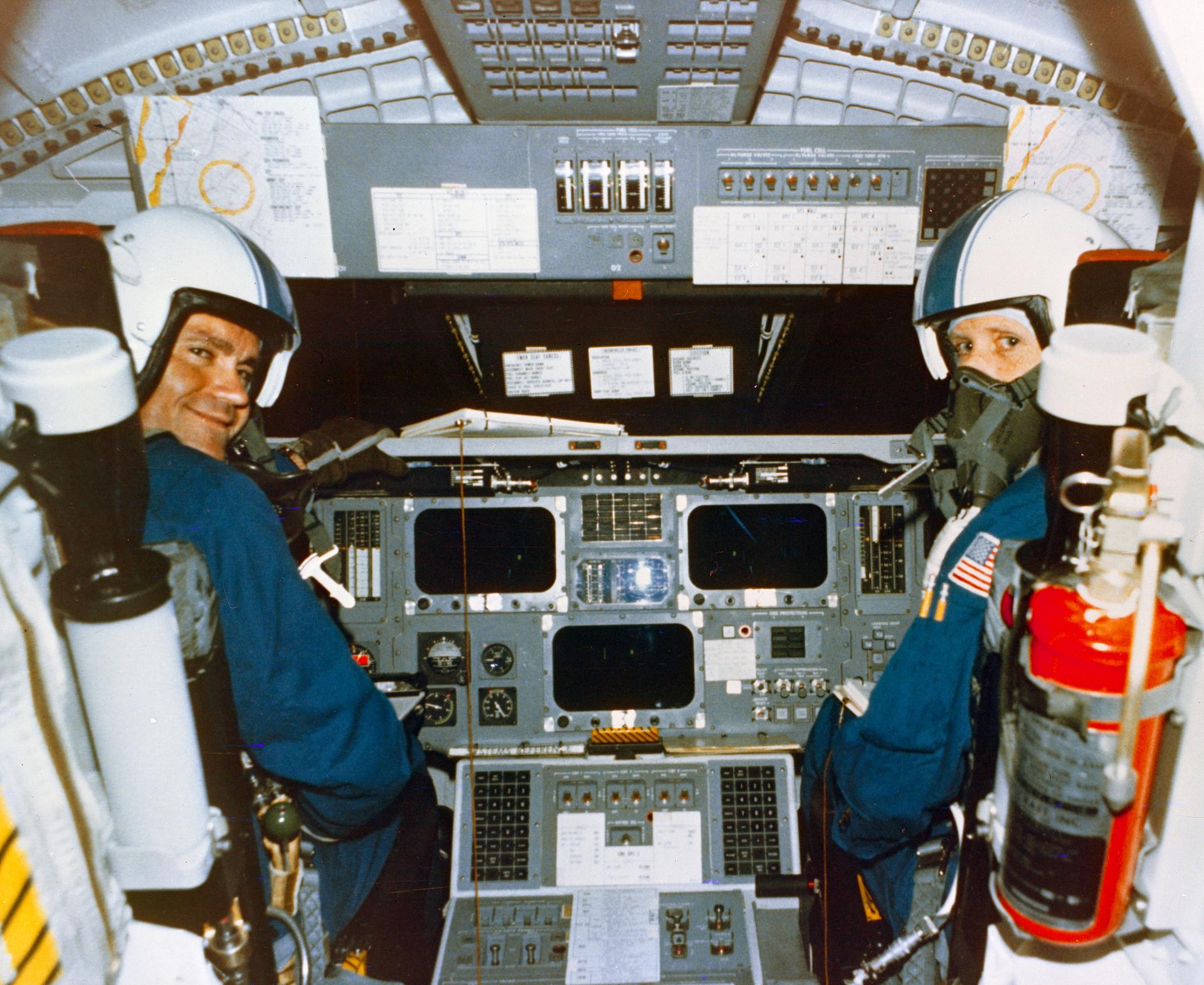
Space Shuttle Avionics System
The Space Shuttle avionics system was a significant advancement of avionics system technology in the areas of systems and redundacy management, digital data base technology, flight software, flight control integration, digital fly-by-wire technology, crew display interface, and operational concepts. By John F. Hanaway and Robert W. Moorehead (NASA SP-504)
Annotated Bibliographies
Much has been written about the history of NASA's Space Shuttle Program. Toward a History of the Space Shuttle: An Annotated Bibliography is a two-part compilation of selected works on this topic.
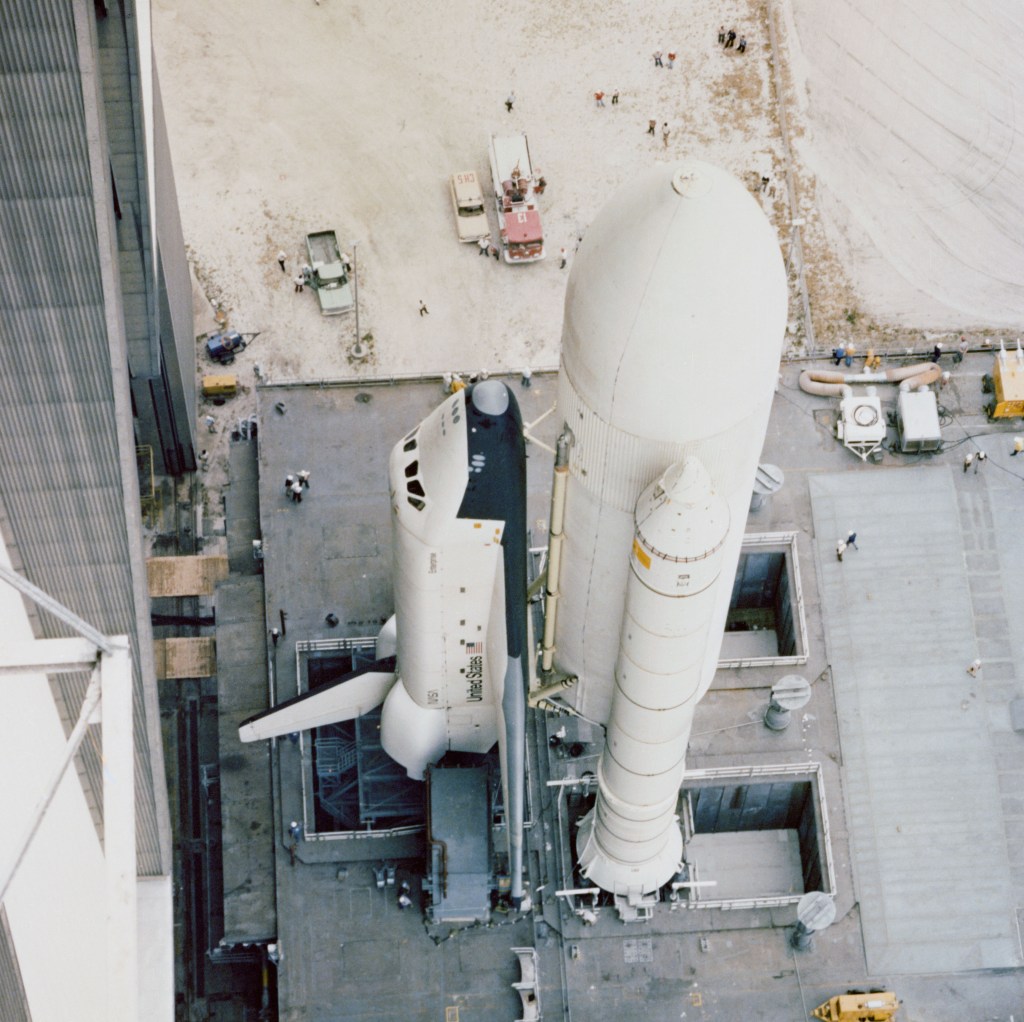
Toward a History of the Space Shuttle (Part 1)
(Through 1991) Compiled by Roger D. Launius and Aaron K. Gillette (NASA SP-4501)
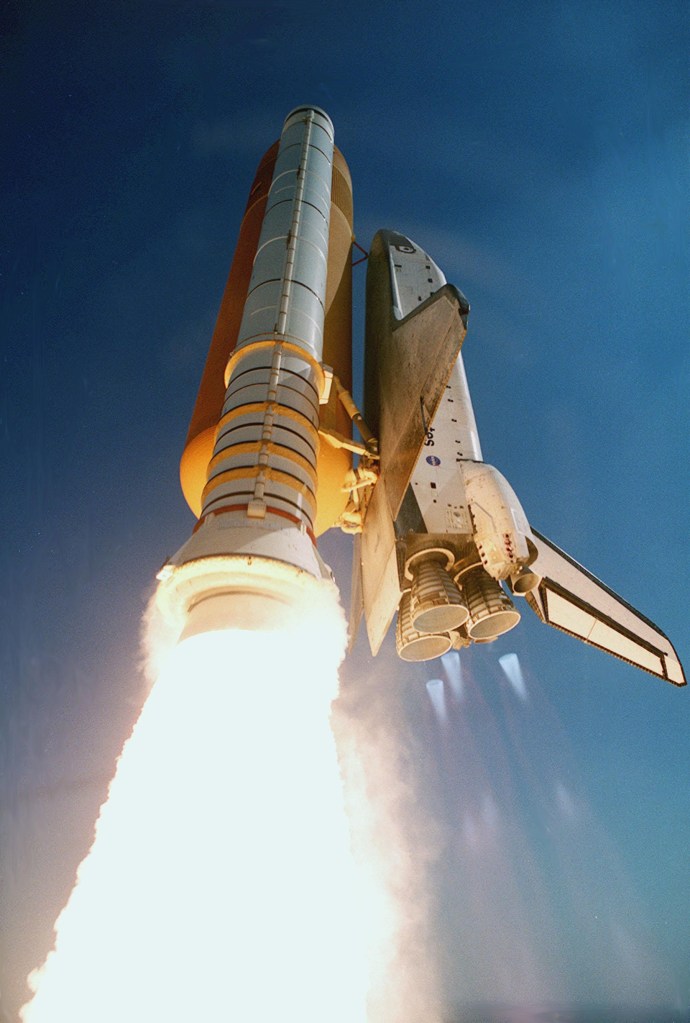
Toward a History of the Space Shuttle (Part 2)
(1992–2011). Compiled by Malinda K. Goodrich, Alice R. Buchalter, and Patrick M. Miller of the Federal Research Division, Library of Congress (NASA SP-4549)
Essays and Book Chapters
Twenty Years On Orbit: The Space Shuttle Legacy by Roger D. Launius.
The Space Shuttle’s First Flight: STS-1 by Henry C. Dethloff. In From Engineering Science to Big Science: The NACA and NASA Collier Trophy Research Project Winners (NASA SP-4219, 1998) By Henry C. Dethloff
Return to Flight: Richard H. Truly and the Recovery from the Challenger Accident by John M. Logsdon. In From Engineering Science to Big Science: The NACA and NASA Collier Trophy Research Project Winners (NASA SP-4219, 1998).
Developing the Space Shuttle by Ray A. Williamson. In Exploring the Unknown: Selected Documents in the History of the U.S. Civil Space Program, Volume IV: Accessing Space. John M. Logsdon, editor (NASA SP-4407).
Why Does the Space Shuttle Have Wings? A Look at the Social Construction of Technology in Air and Space by Stephen J. Garber.
Recordation and HAER Documentation
Shuttle HAER Documentation
Historic American Engineering Record (HAER) Documentation for the Space Transportation System at the Library of Congress
Space Shuttle Recordation
Compiled historical and educational information about the Space Transportation System (more commonly referred to as the Space Shuttle) and its Stack elements (Orbiters, External Tank, Space Shuttle Main Engines, and Solid Rocket Boosters)
Shuttle Carrier Aircraft Recordation
NASA used two modified Boeing 747 jetliners as Space Shuttle Carrier Aircraft (SCA)
Solid Rocket Booster Retrieval Ships Recordation
The SRB Retrieval Ships Historical Recordation website is a compilation of photos, videos and more of the historic Solid Rocket Boosters Retrieval Ships.
White Sands Space Harbor, 1976–2011 Historic American Engineering Record (HAER) Level II Documentation
Prior to permanently closing the White Sands Space Harbor, documentation was collected, including a narrative history, archival photography, drawings, plans, and historic images.
Oral History Collections
STS Recordation Oral History Project
Interviews were collected from key individuals associated with the agency’s Space Shuttle Program, focusing on the Space Shuttle Orbiter and its related components. These interviews include information on a number of Space Shuttle Program aspects from concept development to retirement, and focus on design, hardware evolution, and changes in response to the two Space Shuttle accidents.
Space Shuttle Program Tacit Knowledge Capture Project
The JSC Space Shuttle Program Tacit Knowledge Capture Project was commissioned by the JSC Chief Knowledge Officer and the Space Shuttle Program Manager. The effort included 20 interviews with key members of the Space Shuttle Program. The interviews reflect details of critical program decisions, information on management tools and processes, and lessons learned from areas of expertise. The interviews were conducted by the JSC History Office between April and July 2008, at NASA Centers in Florida, Mississippi, Alabama, and Houston.
Shuttle Carrier Aircraft / Solid Rocket Booster Recovery Oral History Project
This effort involved the collection of history from key individuals associated with the agency’s Shuttle Carrier Aircraft (SCA) and Solid Rocket Booster (SRB) Recovery programs. These interviews include information on a number of aspects from concept development to retirement, and focus on development and operations.
Shuttle-Mir Oral History Project
From early 1994 into 1998, seven American astronauts spent nearly 1,000 days living in orbit with Russian cosmonauts on board the space station Mir. American space shuttles rendezvoused 10 times with Russia’s space station Mir. Called “Phase 1,” the Shuttle-Mir Program prepared the way for the International Space Station and began an era of cooperation and exploration, rarely seen in human history.
Notable Missions
Press Releases, Press Kits, and Mission Information
Life Sciences Data Archive
Archived data and published results from life science experiments conducted during the Space Shuttle Program.
Shuttle Press Kits: 1981–2002
Archived press kits and media resource kits for missions from STS-1 through STS-111.
Shuttle Mission Highlights Videos
Watch post-flight videos presenting highlights from shuttle missions narrated by the crew.
Summary of Shuttle Payloads and Experiments
A listing of the payloads and experiments flown on each shuttle mission from STS-1 through STS-80.
Space Shuttle News Reference (1981 manual) (1988 manual)
A detailed description of the space shuttle vehicle and associated subsystems is given. Space transportation system propulsion, power generation, environmental control and life support system and avionics are among the topics. Also, orbiter crew accommodations and equipment, mission operations and support, and flight crew complement and crew training are addressed.








